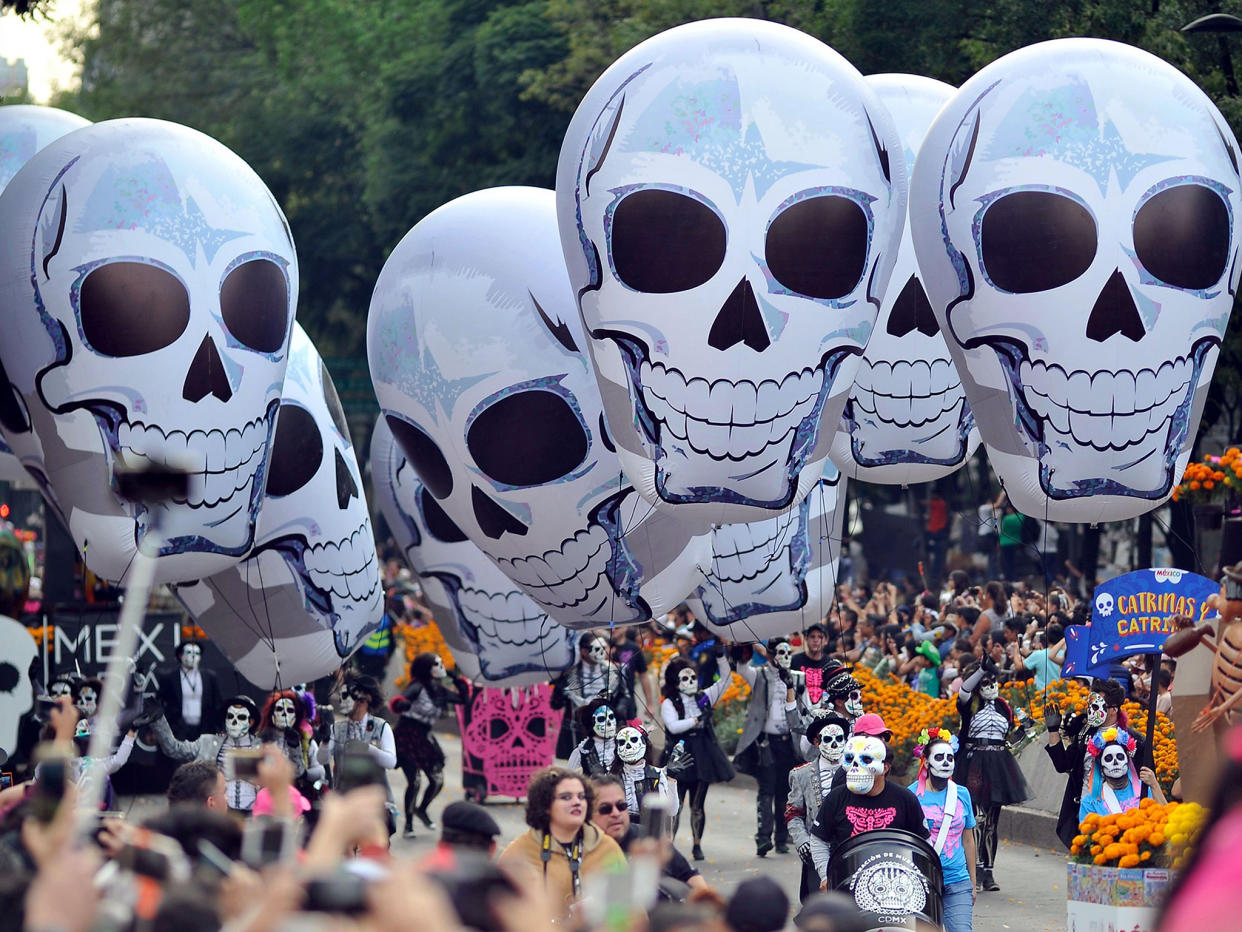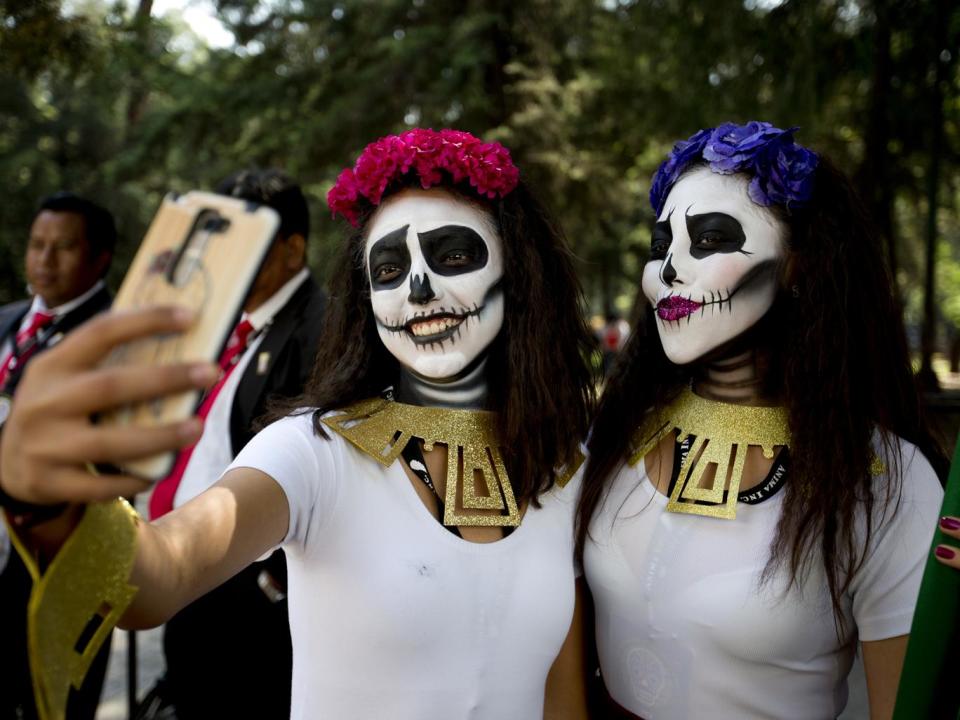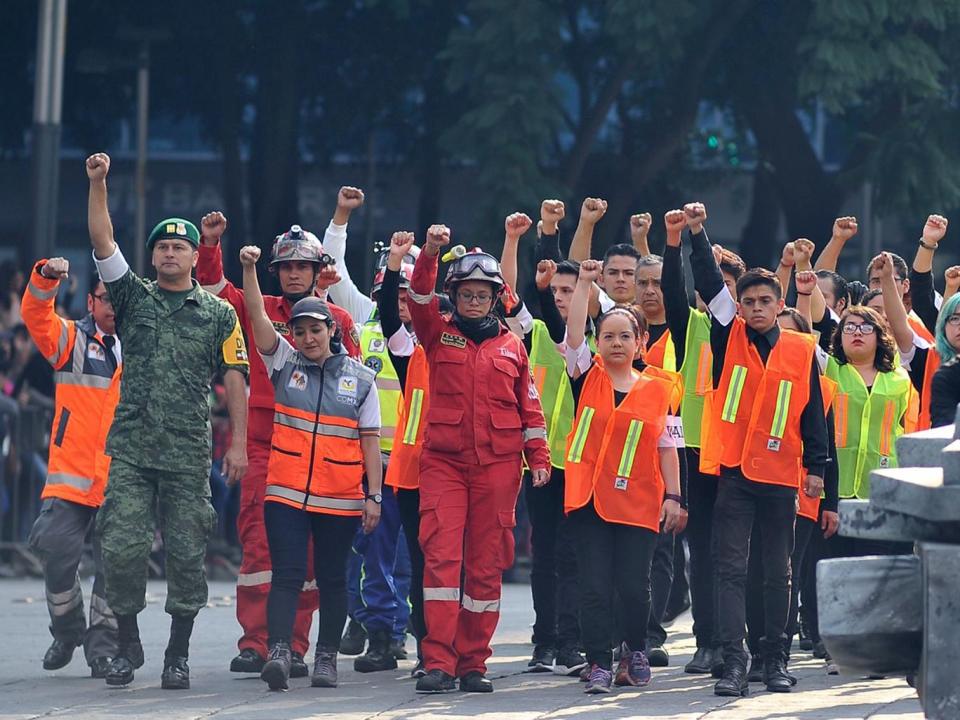Day of the Dead: Thousands take to Mexico City streets to celebrate Dia de los Muertos

Thousands of people have taken to the streets of Mexico City to celebrate Dia de los Muertos – the Day of the Dead.
Mexicans dressed up and paraded decorated procession floats for the festivities, which take place every year between 31 October and 2 November.
Local media reported that around 300,000 people attended the celebrations – up from 200,000 last year.

Dia de los Muertos is a celebration of the lives of friends and family who have died. This year, those honoured included the people who lost their lives in the devastating earthquakes that hit Mexico in September. Two quakes two weeks apart left almost 500 people dead, including 228 in Mexico City alone.
One of the floats during the festival procession featured a raised fist made out of helmets, pick axes and rubble – a tribute to the people who rushed to search for survivors in the aftermath of the quakes.
The raised fist was used by rescue workers as a sign demanding silence as they listened for survivors in the rubble.
"We had an obligation to pay tribute to the fallen, while transmitting the message that the city is still standing," said parade coordinator Julio Blasina.
As part of the festivities, Mexicans dressed up as skeletons and the traditional Mexican La Catrina figure. Floats and more than 700 performers paraded along a four-mile route through the capital.

Dia de los Muertos is believed to originate in Aztec festivals that marked the time when, people thought, the dead returned temporarily to Earth. Similar festivals have been celebrated for up to 3,000 years.
The festival is most closely associated with Mexico but is also celebrated in several other South American and Caribbean countries, including Colombia, Ecuador, Peru and Haiti.

